What Is Igor Ansoff’s Growth Matrix? The Full Guide

Franco Brutti
Let's talk about "ansoff growth matrix": A solid product growth strategy is key to fledgling businesses’ survival. At some point, entrepreneurs have to be able to show investors that their user base is growing, their audience is expanding, and the uptake of their product or service is increasing.
Fail to do so, and investors could find themselves forced to turn off the taps, drying up any aspirations you had of turning your venture into a global success.
Growth is equally important for established businesses, too.
While they may not be under the same time pressures as startups, failure to adapt, change, and uncover new areas of growth could see your market share steadily knawed at by ambitious competitors.
Growth also improves your company’s sustainability, innovation through new products and markets, credibility, customer retention, and of course, profitability.
So what tactics and product growth strategies should you consider? Are there any methods with a proven track record of success?
Well, how about one that’s been tried and tested now for almost 70 years?!
What is the Ansoff Growth Matrix?
The Ansoff Growth Matrix, or Product Market Expansion Grid, is a tool to help businesses analyze, plan, and execute different strategies for growth and assess the risk exposure associated with each one. The model was developed by Russian-American mathematician Igor Ansoff in 1957 and focuses on two specific areas for potential growth:
Within each of these areas, business owners are encouraged to expand their existing activities as well as the exploration of new products and markets. The further you move away from existing products and established markets, the higher the risk element.
The Ansoff Growth Matrix presents these four alternative growth strategies as a 2x2 table or grid. The (x) axis denotes both new and existing products and the (y) axis both new and existing markets:
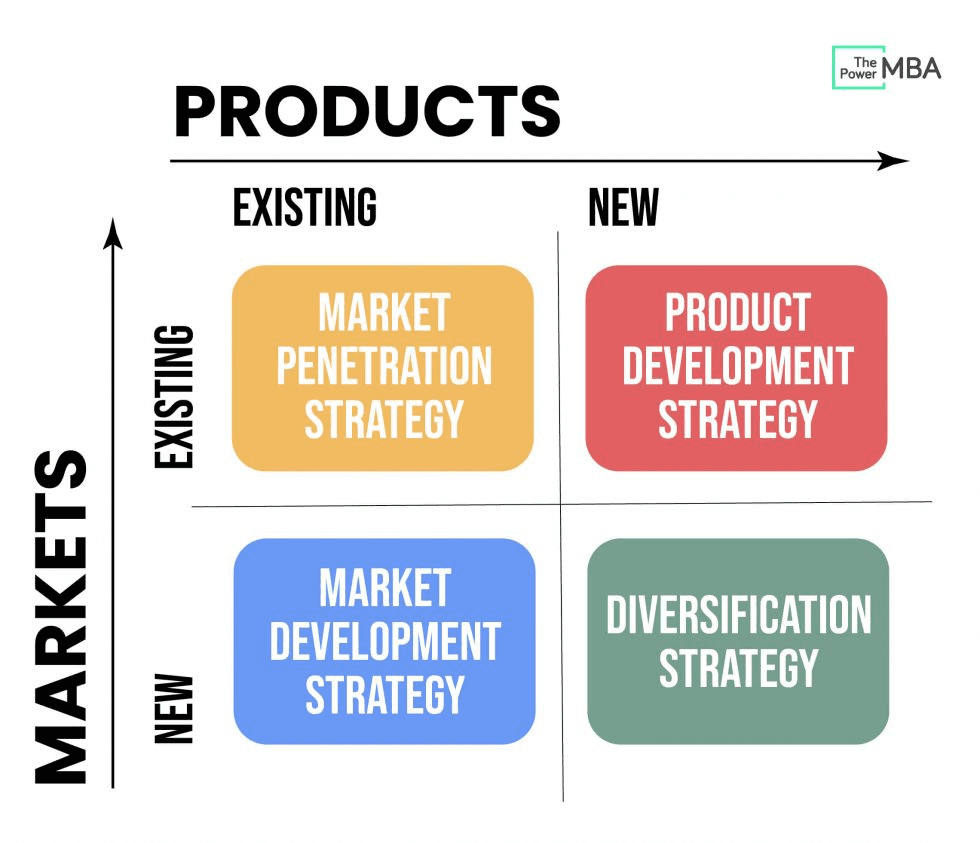
Market Penetration
The first segment of the Product Market Expansion Grid focuses on increasing market share through the sales of existing products or services. This is the lowest risk growth strategy and is somewhat of a “comfort” pick, as you’re not changing anything about the product, market, or distribution channels.
You’re targeting the same consumer demographic and geographical regions with the same products as you always have done. While it remains risk-free it also has the lowest potential for growth.
So how do you get existing customers to buy more of your product, or to buy it more frequently?
One effective tactic could be to try a royalty rewards or points system. For every 6 items a consumer buys from you, they get one free. Although you’re giving away a free product, customers are encouraged to purchase more in their pursuit of your offer and may choose you over a competitor as a result.
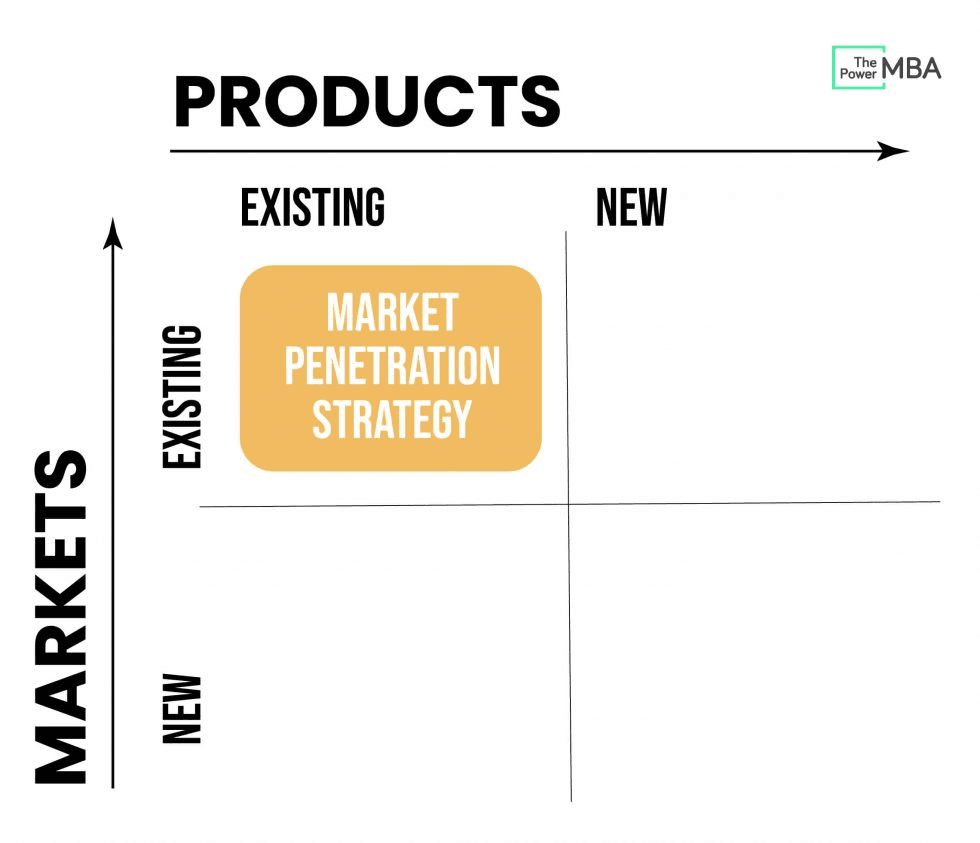
Market Development
The second grid in the Ansoff Growth Matrix is market development. This strategy involves uncovering new markets and new customers for a current product or service range.
Examples include launching your offerings to a new geographic region or consumer demographic. Alternatively, it might mean exploring new distribution channels. If you’ve primarily sold through traditional brick and mortar stores then exploring e-commerce might be an option.
Now there is a moderate risk level attached to this growth strategy as you have no idea how the market will react.
Research needs to be carried out on how best to market and advertise your product to this new group, which distribution channels do they prefer, and what are their specific needs? Do they differ slightly from your existing markets?
All this will have to be explored before engaging with market development growth strategies.
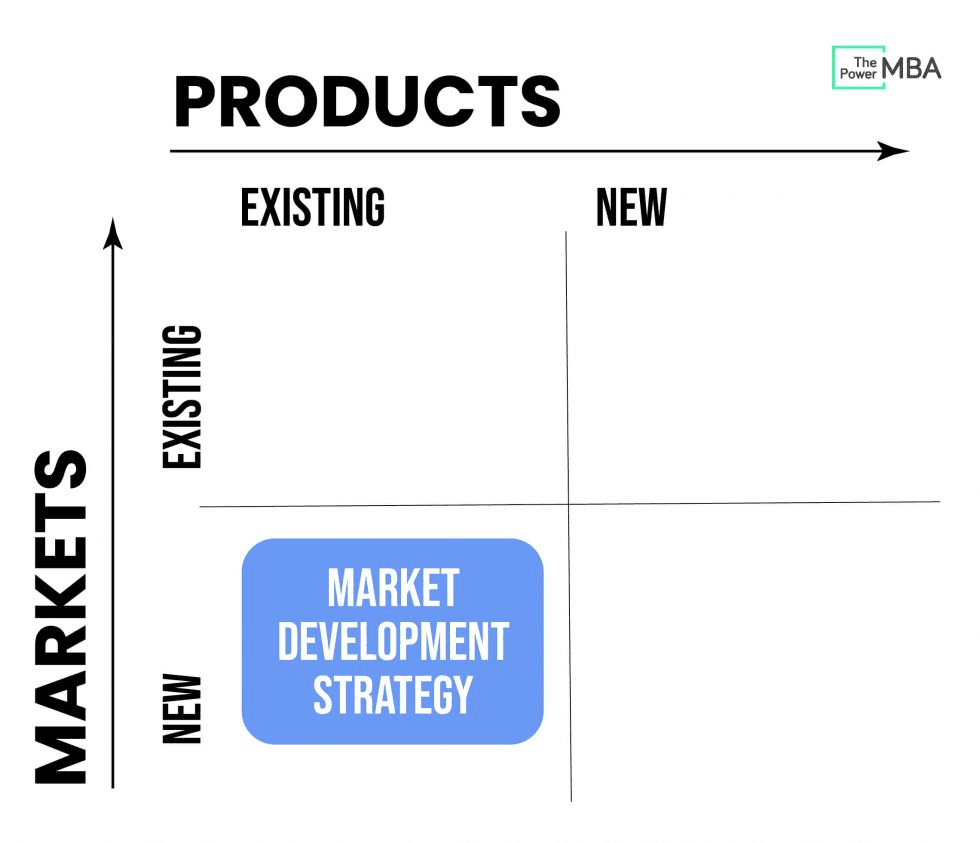
Product Development
The third segment of the Ansoff Growth Matrix explores introducing new products to an existing market. Again, this strategy has a moderate level of risk attached as these new products have never been seen before by this particular market.
However, you do have the benefit of previously working with this consumer base and should have a good idea of how to satisfy their needs.
The questions that do still need to be asked are whether or not existing products can be improved to better satisfy their needs? If so, what areas do your R&D (research and development) team need to focus on?
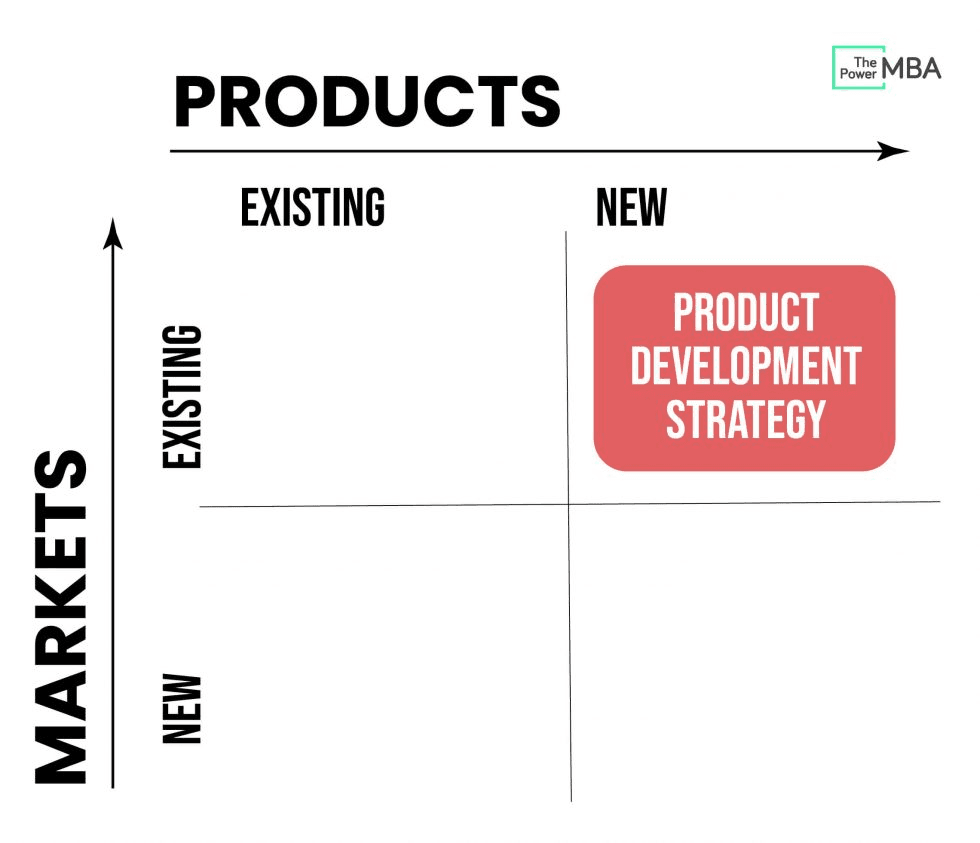
Diversification
The final quadrant in the Ansoff Growth Strategy matrix is diversification - the launch of brand new products in unexplored markets.
This growth strategy has the highest element of risk. You have no idea whether:
Your product is needed
The market will take to this product
However, with greater risk comes greater rewards. If your new products do prove a hit in these new market segments then the profit margins could prove potentially lucrative.
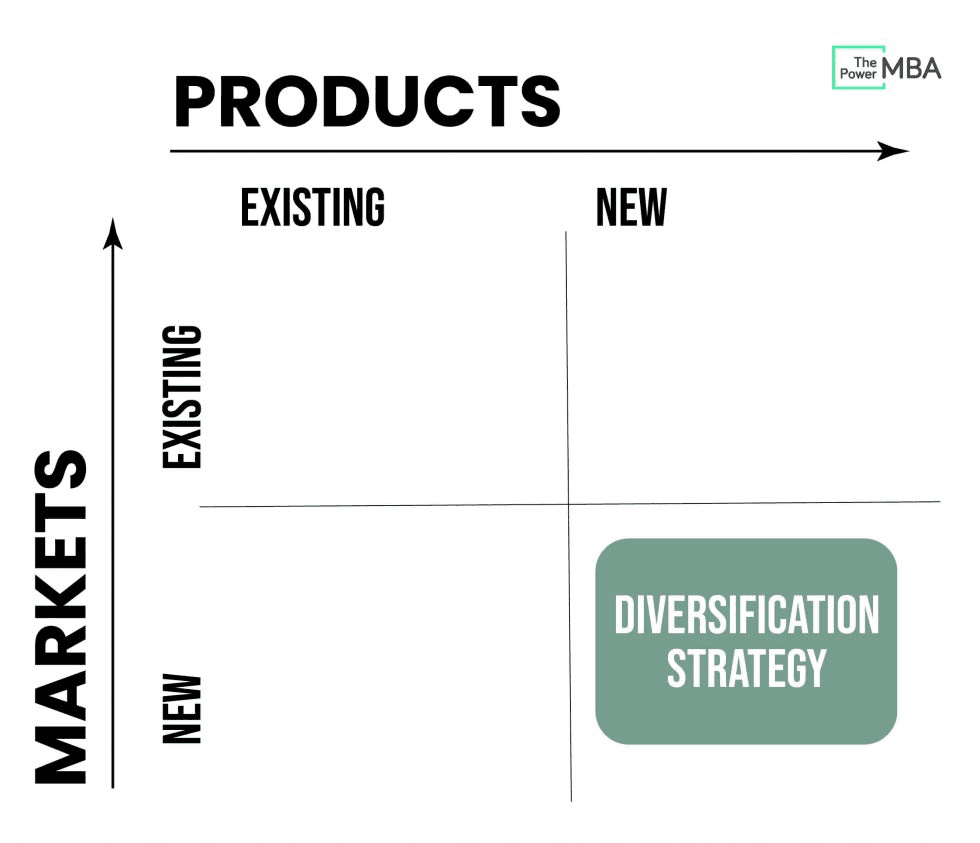
Ansoff Growth Matrix - Apple
Now that we have a basic understanding of how the Ansoff Growth Matrix works let’s analyze how an established brand name used the tool to achieve exponential market growth.
Market Penetration
Apple is no stranger to market penetration product growth strategies.
Their aggressive sales of more and more iPhones into the existing market via various distribution channels is a testament to this. You can purchase their products at one of their flagship Apple stores, online at apple.com, or via third-party network distributors such as Verizon, AT&T, and T-Mobile.
Market Development
Like many other ambitious US companies, Apple achieved market development by continuing its expansion globally. You can buy Apple products from almost any location across the globe, including China, Russia, Japan, and developing markets such as Latin America and South Asia.
Product Development
Apple’s product development product growth strategy can be traced back to the release of the iPod in 2001. This revolutionary new product allowed existing Mac users to transfer music across from their iTunes accounts to a portable music player, and in 2003, the iTunes Store is released, allowing customers to purchase music files.
Now of course there’s a whole range of other Apple products available to existing customers including the Apple Watch, Apple TV, macOS, iCloud, and the iPhone.
Diversification
Apple started its journey in 1976 as the Apple Computer Company. They sold (as the name suggests) computers. Nothing more, nothing less.
However, fast-forward 40+ years and the company is considered one of the most important multinational technology companies in the world alongside Facebook, Amazon, Microsoft, and Google.
During those 40 years, they’ve rapidly diversified their business offering by launching products such as Apple Pay (mobile payment and digital wallet service), Apple Card (credit card), Apple Watch (digital wristwatch), Apple TV (digital media service), and Siri (AI virtual assistant).
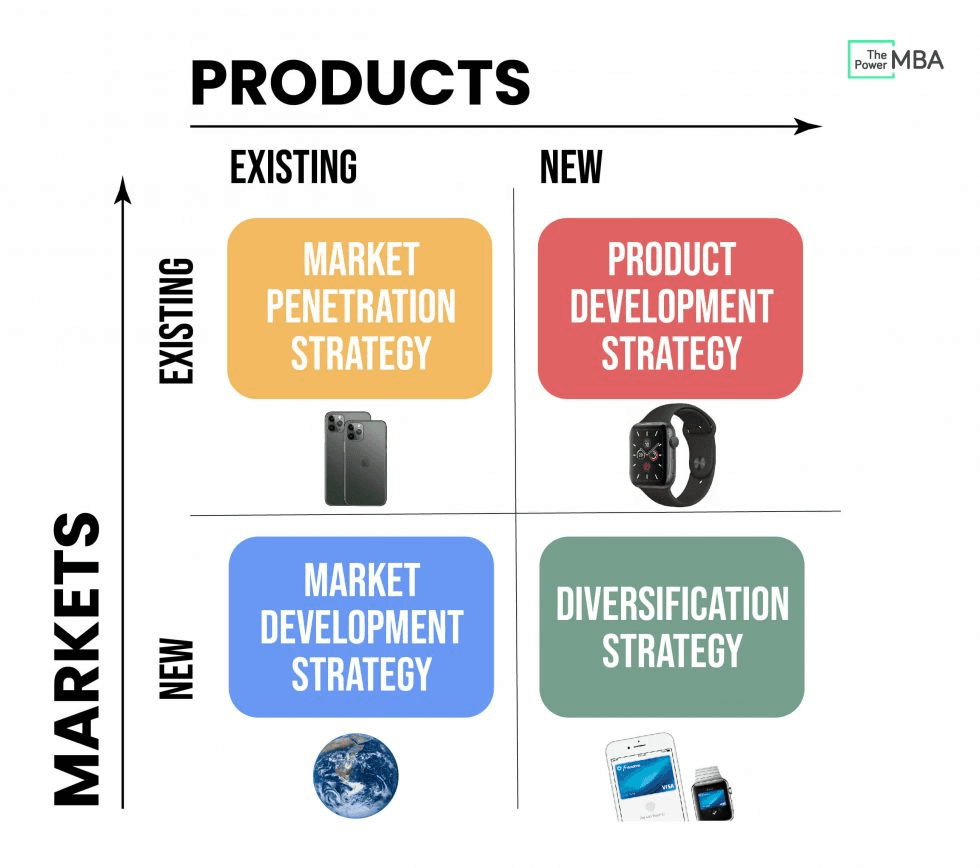
Conclusion
The Ansoff Growth Matrix helps companies weigh up their market growth and product growth strategies. Is it better to consolidate existing markets and reduce risk exposure? Or is the company in a strong enough position to experiment with new products and emerging markets? A thorough analysis of your current market position and product roadmap will ensure you select the right strategy for your business.
Looking for something specific?






